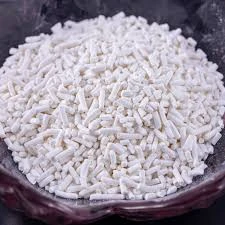
Two Common Chemicals Employed in Water Purification at Treatment Facilities
Two Chemicals Used to Treat Water in Water Treatment Plants
Water is an essential resource for human life, serving various purposes ranging from drinking and cooking to sanitation and industrial processes. Due to the increasing stress on water resources—largely driven by population growth, industrialization, and agricultural demands—water treatment plants have become integral to ensuring the safety and cleanliness of our water supply. Among the wide array of chemicals utilized in these facilities, two prominent ones stand out chlorine and alum. Both play vital roles in the purification process, addressing different aspects of water treatment.
Chlorine The Disinfectant
Chlorine is one of the most widely used chemicals in water treatment. Its primary function is to disinfect water, making it safe for human consumption by eliminating harmful bacteria, viruses, and other pathogens that may be present in the water supply. Chlorination works through a chemical reaction where chlorine molecules react with organic and inorganic substances in the water, resulting in the formation of hypochlorous acid, a potent agent that destroys microbial life.
The process begins with the addition of chlorine gas or liquid chlorine (sodium hypochlorite) to raw water. The effectiveness of chlorination largely depends on factors such as pH level, temperature, and contact time. Chlorine is widely acclaimed for its rapid action and long-lasting residual effects, making it possible to maintain sanitary conditions throughout the distribution system.
However, while chlorine is an effective disinfectant, it can also form disinfection byproducts (DBPs) that may pose health risks if consumed over long periods. Some examples of DBPs include trihalomethanes (THMs) and haloacetic acids (HAAs). To mitigate these risks, water treatment plants must carefully monitor chlorine levels and byproduct formation, often implementing additional treatment processes to reduce DBP concentrations.
Alum The Coagulant
two chemicals used to treat water in water treatment plants

Alum, or aluminum sulfate, is another crucial chemical utilized in water treatment, primarily as a coagulant. The coagulation process is vital for removing suspended particles and turbidity from water, enhancing its clarity and safety. When alum is added to water, it reacts with hydroxide ions to form aluminum hydroxide, which is a gelatinous precipitate. This precipitate then captures and clumps together smaller particles, creating larger aggregates, or flocs, that can be easily removed from the water during subsequent filtration processes.
The coagulation and flocculation process consists of several steps. Initially, alum is mixed into the incoming water, prompting the formation of flocs. This mixture is then agitated to promote floc growth through collision and adhesion between particles. Once adequate floc size is achieved, the water undergoes a settling phase where heavier floc particles sink to the bottom, leaving clearer water above.
The use of alum not only aids in particle removal but also improves the effectiveness of disinfection processes. By removing organic matter through coagulation, alum helps to reduce the formation of disinfection byproducts during chlorination. Moreover, it enhances water quality by lowering turbidity levels, which allows light to penetrate deeper and supports aquatic life.
Conclusion
In conclusion, chlorine and alum are two fundamental chemicals extensively employed in water treatment plants to ensure the safety and quality of our water supply. Chlorine serves primarily as a disinfectant, protecting public health by eliminating harmful pathogens, while alum acts as a coagulant, effectively removing turbidity and particulates from water. Together, these chemicals play complementary roles in the water treatment process, addressing the challenges posed by contaminants and ensuring that clean, safe water is delivered to communities.
As we continue to face growing challenges related to water scarcity and pollution, understanding the importance of these treatment chemicals becomes increasingly crucial. The proper management and application of chlorine and alum, alongside advancements in technology and regulatory measures, will be essential in safeguarding our water resources for future generations. By prioritizing effective water treatment practices, we can ensure that access to clean and safe water remains a reality for all.
-
Pure Sodium Dichloroisocyanurate Dihydrate | Powerful DisinfectantNewsAug.29,2025
-
Industrial Chemicals: Quality & Purity for Every IndustryNewsAug.28,2025
-
Nitrile Rubber Honoring Strict Production StandardsNewsAug.22,2025
-
Aspartame Ingredients Honoring Food Safety ValuesNewsAug.22,2025
-
Fertilizer for Balanced Plant NutritionNewsAug.22,2025
-
Cyanide Gold Processing with High Purity AdditivesNewsAug.22,2025
-
Formic Acid in Textile Dyeing ApplicationsNewsAug.22,2025
Hebei Tenger Chemical Technology Co., Ltd. focuses on the chemical industry and is committed to the export service of chemical raw materials.
-

view more DiethanolisopropanolamineIn the ever-growing field of chemical solutions, diethanolisopropanolamine (DEIPA) stands out as a versatile and important compound. Due to its unique chemical structure and properties, DEIPA is of interest to various industries including construction, personal care, and agriculture. -

view more TriisopropanolamineTriisopropanolamine (TIPA) alkanol amine substance, is a kind of alcohol amine compound with amino and alcohol hydroxyl, and because of its molecules contains both amino and hydroxyl. -

view more Tetramethyl Thiuram DisulfideTetramethyl thiuram disulfide, also known as TMTD, is a white to light-yellow powder with a distinct sulfur-like odor. It is soluble in organic solvents such as benzene, acetone, and ethyl acetate, making it highly versatile for use in different formulations. TMTD is known for its excellent vulcanization acceleration properties, which makes it a key ingredient in the production of rubber products. Additionally, it acts as an effective fungicide and bactericide, making it valuable in agricultural applications. Its high purity and stability ensure consistent performance, making it a preferred choice for manufacturers across various industries.





